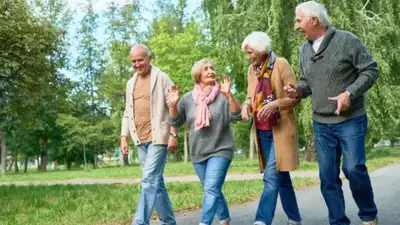
A simple shift in walking speed could hold the key to healthier aging. According to new research from the University of Chicago Medicine, older adults who walk just a little faster—about 14 steps more per minute than their usual pace—can see meaningful improvements in physical function. This small increase in walking cadence was shown to reduce signs of frailty, such as fatigue, weakness, and difficulty with everyday tasks. Walking has long been recommended to maintain mobility and independence in aging populations, but this study provides concrete evidence for a specific, achievable change that delivers measurable health benefits. As scientists continue exploring ways to keep older adults active, this cadence-based approach offers a promising, low-cost intervention.
How older adults can walk faster for a healthy and long life
Walking cadence, or the number of steps taken per minute, is a simple and intuitive way to measure exercise intensity. Researchers found that increasing cadence to around 100 steps per minute helped frail or pre-frail seniors walk farther and feel stronger over time. The study involved structured walking sessions within retirement communities, monitored by trained staff using wearable sensors. Those who increased their pace, not dramatically but just slightly above their norm, experienced notable boosts in stamina and endurance.
From right shoes to warming up right: 5 safety rules to follow while walking
Start by figuring out your baseline walking pace. Count how many steps you take per minute during a normal stroll. Then, gradually increase your pace by about 14 steps per minute. This should feel slightly brisk but still comfortable. Consistency is key: try to incorporate this pace into your daily walks, ideally for 20 to 30 minutes at a time. Even moderate improvements can reduce fatigue, improve balance, and boost confidence in performing everyday activities.
A simple change with big impact
As aging often comes with reduced physical capacity, even minor adjustments in lifestyle can make a big difference. By encouraging older adults to take just a few more steps per minute, this research offers a practical and accessible way to delay or reverse frailty. Walking faster, safely and intentionally, could be one of the easiest prescriptions for a longer and more independent life.














